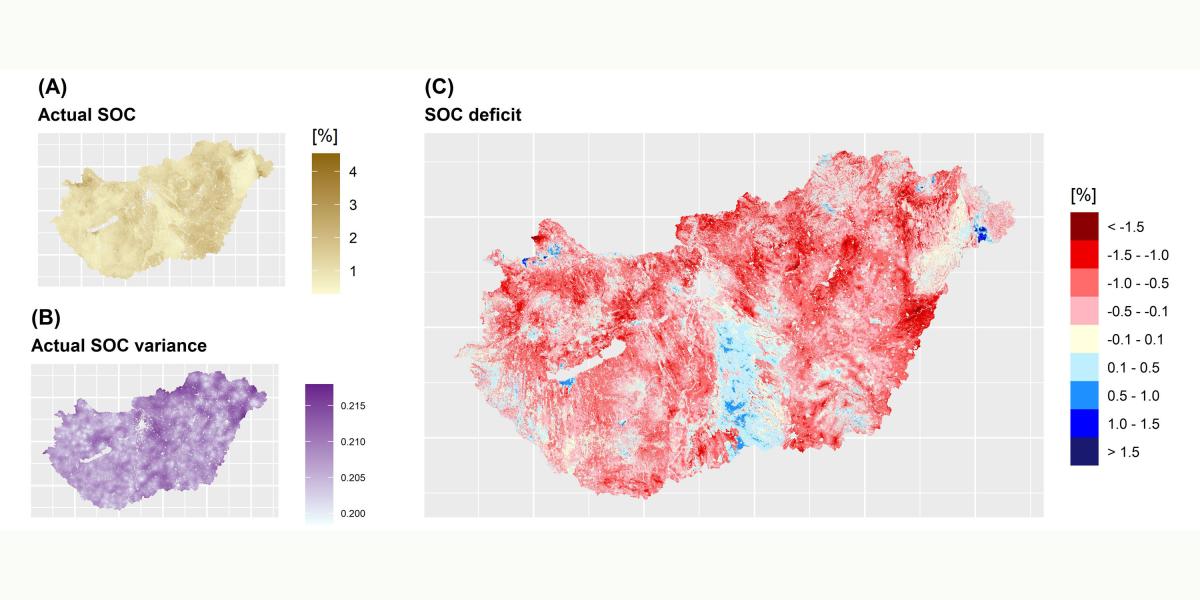Institute for Soil Sciences, Centre for Agricultural Research in close collaboration with the Geographical Institute, Research Centre for Astronomy and Earth Sciences and Forest Research Institute, University of Sopron studied the feasibility of countrywide mapping and assessment of organic carbon saturation in the topsoil using machine learning-based pedotransfer function.
Stakeholders and policymakers have been becoming more and more interested not just in the potential organic carbon (SOC) saturation level of soils but also in spatially explicit information on the degree of SOC deficit, which can support future policy and sustainable management strategies, and carbon sequestration-associated spatial planning. Thus the objective of our study was to develop a cubist-based pedotransfer function (PTF) for predicting and mapping the saturated SOC content of the topsoils (0–30 cm) in Hungary and then compare the resulting map with the actual SOC map to determine and assess the degree of SOC deficit. It was assumed that topsoils covered by permanent forests can be practically considered as saturated in SOC. Using the monitoring points of the Hungarian Soil Information and Monitoring System located in forests as reference soil profiles, we developed a cubist-based PTF. The transparent model structure provided by cubist allowed to show that not just the physicochemical properties of soils (e.g., texture, and pH) but also environmental conditions, such as topography (e.g., slope, altitude, and topographical position) and climate (e.g., long-term mean annual temperature, and evaporation), characterizing landscape are important factors in predicting the level of SOC saturation. Our results also pointed out that there is SOC deficit on large part of the country (∼80%) showing high spatial variability. It was also revealed that the most considerable potential for additional SOC sequestration can be found related to soils with medium to high actual SOC content.
The research has been published with open access in CATENA (D1, IF: 6.367):
Szatmári, G.; Pásztor, L.; Laborczi, A.; Illés, G.; Bakacsi, Zs.; Zacháry, D.; Filep, T.; Szalai, Z.; Jakab, G. Countrywide mapping and assessment of organic carbon saturation in the topsoil using machine learning-based pedotransfer function with uncertainty propagation. CATENA 2023, 227, 107086.
https://doi.org/10.1016/j.catena.2023.107086

